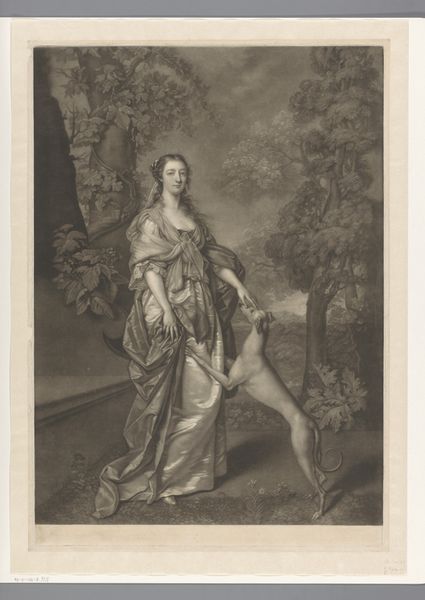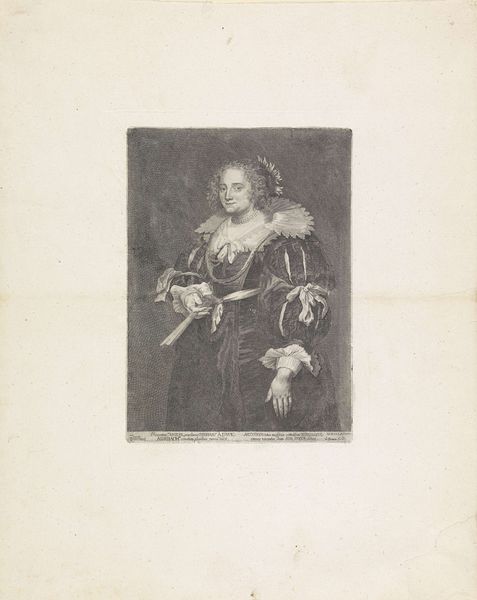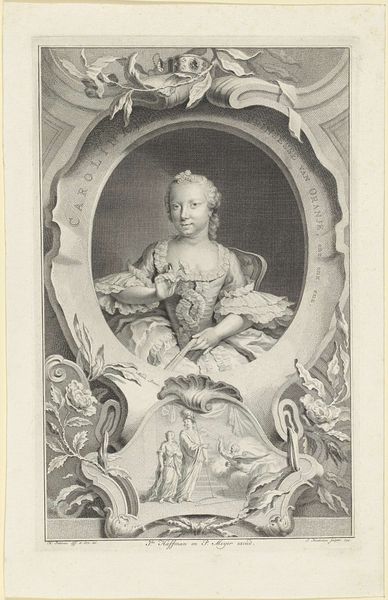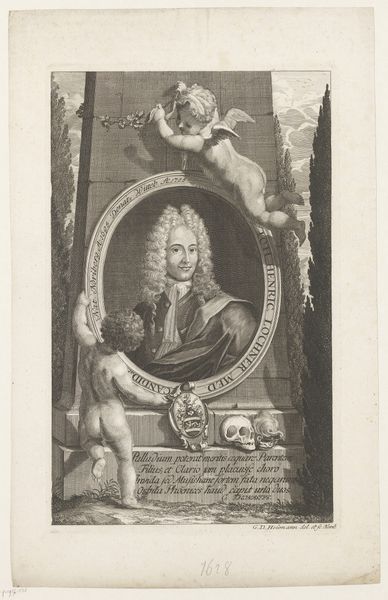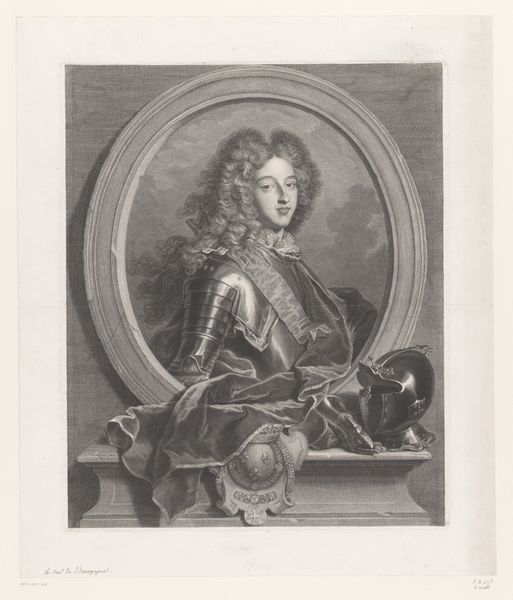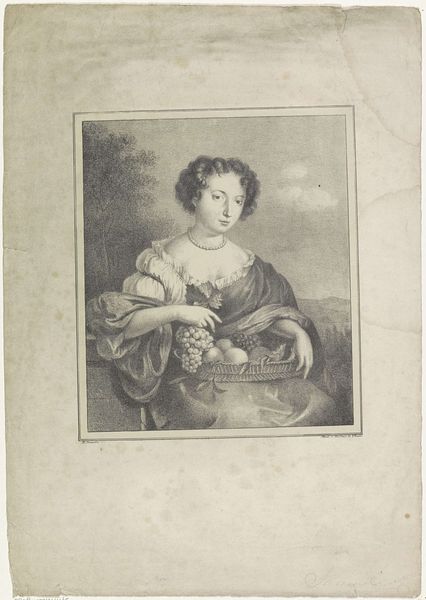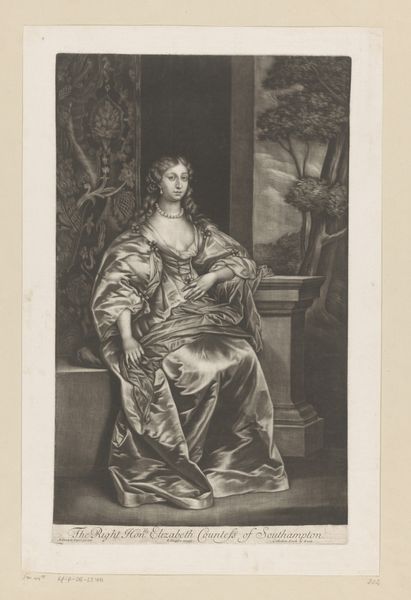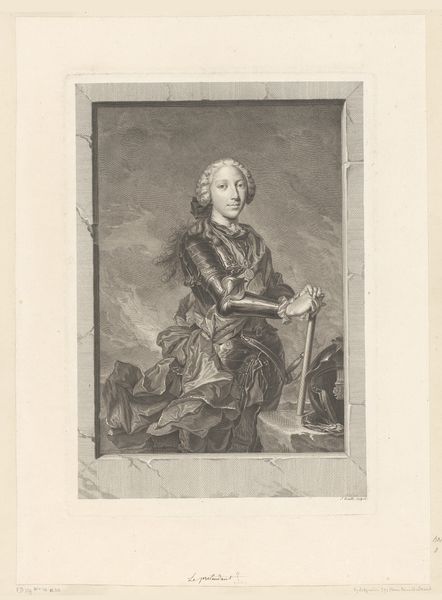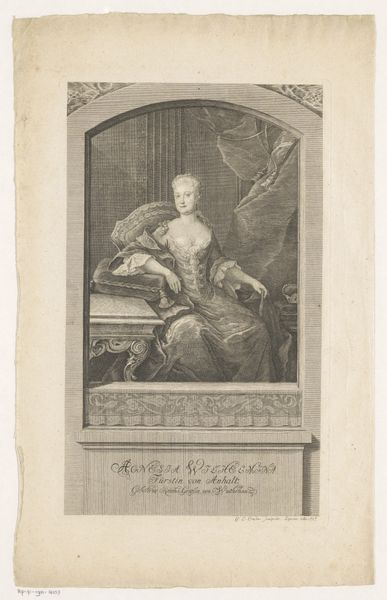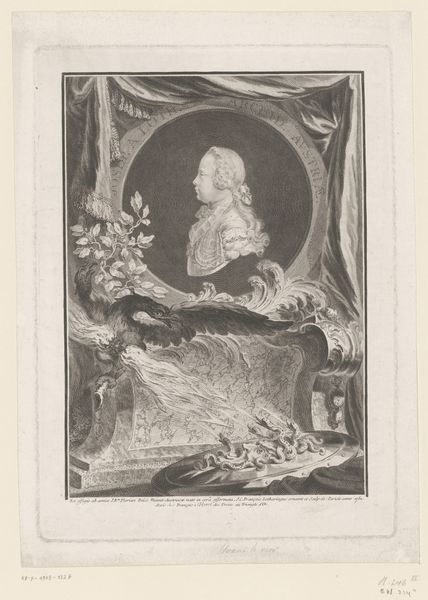
print, engraving
#
portrait
# print
#
old engraving style
#
history-painting
#
engraving
#
realism
Dimensions: height 244 mm, width 160 mm
Copyright: Rijks Museum: Open Domain
Editor: Here we have an anonymous 19th-century engraving from the Rijksmuseum, "Portret van Albertine Agnes, prinses van Oranje," or "Portrait of Albertine Agnes, Princess of Orange". The fine lines are just incredible! How would you interpret this print, focusing on the materials and processes involved? Curator: What interests me immediately is the mechanical process of reproduction inherent in engraving. Consider the labor involved in meticulously transferring the original image onto a copper plate, the controlled act of carving lines to hold ink, and then the repeated application of pressure to create identical images. It allows for the democratization of portraiture, making images of power accessible to a wider audience. Doesn't that shift how we think about its purpose? Editor: I see what you mean. It makes me consider who would purchase a print like this and what their intentions might have been. Curator: Exactly! We must also analyze the social context within which these prints circulated. This artwork serves as a commodity that strengthens particular social narratives, in contrast to the aura around a singular painting of nobility. The material transformation involved is just as worthy as aesthetic or art historical ideas in the piece. Editor: So, even the act of reproduction and circulation is part of the artwork's meaning? Curator: Precisely. Think about it: The availability of these images impacts the perception and distribution of status. They move through trade routes to arrive in many different places and social strata! It redefines ideas around craftsmanship as more technical ability spreads to more of the labor force. Editor: That definitely gives me a different perspective! It is no longer about just aesthetic choices, but really considering all of the choices behind materials and production and their effects on society. Thank you! Curator: My pleasure. By exploring the materiality and production, we get much closer to understanding how art reflects the social and political realities of its time.
Comments
No comments
Be the first to comment and join the conversation on the ultimate creative platform.
